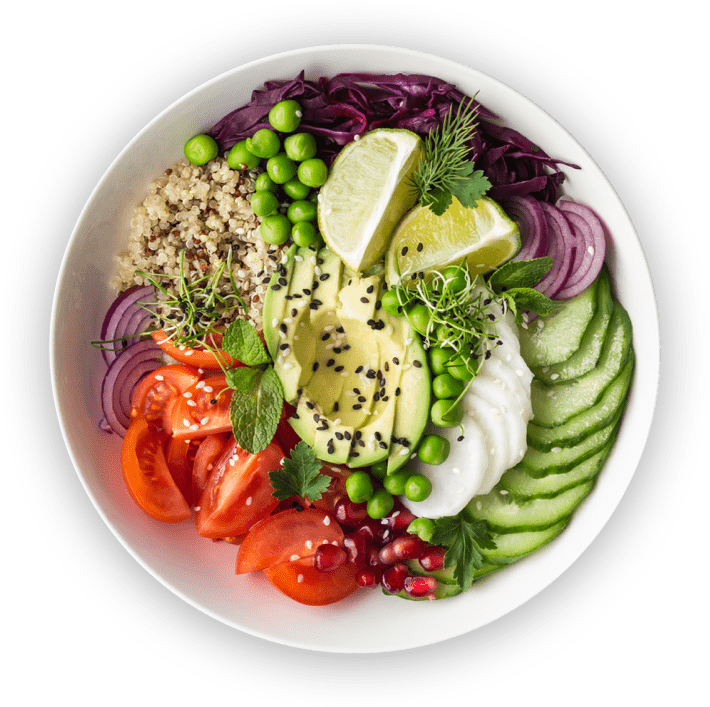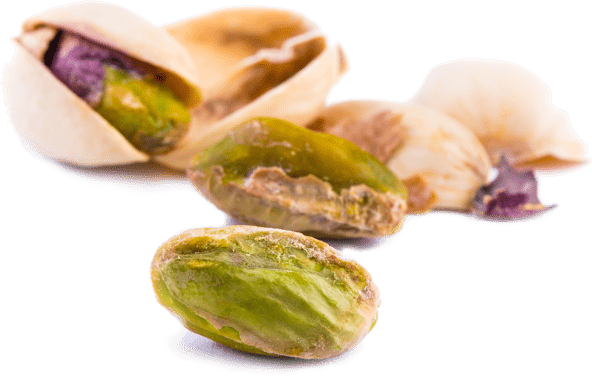Nutrition for Osteoporosis
Fuel yourself with foods that can support your health and wellness goals. A nutritious diet can help you prevent and manage osteoporosis by assisting in the growth and maintenance of bones. Calcium, vitamin D, and protein all play an important role in bone health.
Calcium
Maintaining an adequate calcium intake is a necessary step towards good bone health throughout life. The main goal of good calcium nutrition is to maintain an adequate supply so that our body does not have to dip into the reserve of calcium in our bones.

How Much Calcium Do You Need?
Osteoporosis Canada recommends the following calcium intake (total intake through diet and supplementation) on a daily basis:
| Age | Daily Calcium Requirement |
|---|---|
| 51–70 (male) | 1000 mg |
| 70+ (male) | 1200 mg |
| 50+ (female) | 1200 mg |
Foods Rich in Calcium
Try to incorporate more calcium into your daily diet by including some of the high calcium foods below:
| Calcium Content of Some Common Foods | Serving Size | Calcium |
|---|---|---|
| MILK AND MILK PRODUCTS | ||
| Milk – 2%, 1%, skim, chocolate | 1 cup/250 ml | 300 mg |
| Buttermilk | 1 cup/250 ml | 285 mg |
| Cheese – Mozzarella | 1 1/4" /3 cm cube | 200 mg |
| Cheese – Cheddar, Edam, Gouda | 1 1/4" /3 cm cube | 245 mg |
| Yogurt – plain | 3/4 cup/185 ml | 295 mg |
| Milk – powder, dry | 1/3 cup/75 ml | 270 mg |
| Ice cream | 1/2 cup/125 ml | 80 mg |
| Cottage cheese – 2%, 1% | 1/2 cup/125 ml | 75 mg |
| FISH AND ALTERNATIVES | ||
| Sardines, with bones | 1/2 can/55 g | 200 mg |
| Salmon, with bones – canned | 1/2 can/55 g | 240 mg |
| Fortified rice or soy beverage | 1 cup/250 ml | 300 mg |
| Fortified orange juice | 1 cup/250 ml | 300 mg |
| Molasses, blackstrap | 1 tbsp/15 ml | 180 mg |
| Sesame seeds | 1/2 cup/125 ml | 95 mg |
| Beans–baked | 1/2 cup/125 ml | 75 mg |
| Beans (kidney, lima) – cooked | 1 cup/250 ml | 50 mg |
| Soybeans – cooked | 1 cup/250 ml | 170 mg |
| Taco | 1 small | 221 mg |
| Tofu – with calcium sulfate | 3 oz/84 g | 130 mg |
| BREADS AND CEREALS | ||
| Muffin – bran (homemade with milk) | 1 medium | 84 mg |
| Bread – whole wheat | 2 slices | 40 mg |
| Instant oatmeal, calcium added | 1 pouch/32 g | 150 mg |
| FRUITS AND VEGETABLES | ||
| Broccoli – cooked | 3/4 cup/185 ml | 50 mg |
| Orange | 1 medium | 50 mg |
| Banana | 1 medium | 10 mg |
| Bok Choy | 1/2 cup/125 ml | 75 mg |
| Figs – dried | 10 | 150 mg |
Non-Dairy Foods Rich in Calcium
For those who can’t consume dairy products or would prefer not to, it is still important to make sure you get enough calcium from other sources. Found in the table below are several common non-dairy foods that are high in calcium.
| Non-Dairy Foods | Serving Size | Calcium |
|---|---|---|
| Almonds | 1/4 cup | 103 mg |
| Baked beans–canned | 1 cup | 154 mg |
| Black-eyes peas, boiled | 1 cup | 211 mg |
| Molasses, blackstrap | 1 tbsp | 180 mg |
| Bok choy–cooked | 1/2 cup | 84 mg |
| Broccoli–cooked | 3 spears | 51 mg |
| Calcium–fortified | 6 oz | 200 mg |
| Chinese cabbage, raw | 1 cup | 74 mg |
| Collard greens, boiled | 1 cup | 357 mg |
| Figs - dried | 5 medium | 90 mg |
| Firm Tofu - With Calcium Sulfate | 1/2 cup | 204 mg |
| Fortified soy beverage | 1/2 cup | 300 mg |
| Fortified soymilk | 1 cup | 368 mg |
| Kale–cooked | 1 cup | 94 mg |
| Oranges | 1 cup | 72 mg |
| Salmon - canned with bones | 1/2 cup | 181 mg |
| Orange juice with calcium | 1 cup | 344 mg |
| White beans - cooked | 1 cup | 202 mg |
Vitamin D
Vitamin D helps the body absorb and store calcium from the foods we eat. Our bodies can produce vitamin D when we are exposed to sunlight.
During the winter months, however, most Canadians do not get enough sun exposure to produce adequate amounts of vitamin D, nor do we get enough vitamin D through our dietary intake. Vitamin D intake can be enhanced through dietary sources and supplements.

How Much Vitamin D Do You Need?
Osteoporosis Canada recommends the following intake of vitamin D (total intake through diet and supplementation) on a daily basis:*
| Age | Daily Vitamin D Requirement |
|---|---|
| 70 & younger (male or female) | 600 IU |
| 70+ (male or female) | 800 IU |
* For those who don’t have osteoporosis and don’t have a condition that interferes with vitamin D absorption
IU = International Units
Non-Dairy Foods Rich in Vitamin D
Add more vitamin D into your diet by including some of these foods rich in vitamin D:
| Vitamin D Content in Common Foods | Serving Size | IU Per Serving* |
|---|---|---|
| Cod liver oil | 1 tbsp | 1,360 |
| Salmon (sockeye) - cooked | 3 oz | 794 |
| Mushrooms that have been exposed to ultraviolet light to increase vitamin D, 3 ounces (not yet commonly available) | 3 oz | 400 |
| Mackerel - cooked | 3 oz | 388 |
| Tuna fish – canned in water, drained | 3 oz | 154 |
| Milk – nonfat, reduced fat, and whole, vitamin D-fortified | 1 cup | 115-124 |
| Orange juice – fortified with vitamin D (check product labels, as amount of added vitamin D varies) | 1 cup | 100 |
| Yogurt – fortified with 20% of the DV for vitamin D (more heavily fortified yogurts provide more of the DV) | 6 oz | 80 |
| Margarine – fortified | 1 tbsp | 60 |
| Sardines – canned in oil, drained | 2 sardines | 46 |
| Liver, beef - cooked | 3.5 oz | 46 |
| Ready-to-eat cereal – fortified with 10% of the DV for vitamin D (more heavily fortified cereals might provide more of the DV) | 0.75 - 1 cup | 40 |
| Egg (vitamin D is found in yolk) | 1 whole egg | 25 |
| Cheese – Swiss | 1 oz | 6 |
IU = International Units, DV = Daily Value
Protein
Protein is necessary for our bodies to maintain many regular functions and is essential for bone health. Proteins are made of amino acids that our bodies use to create hormones, muscles, and bones. This is why proteins help to build and repair body tissues like bones and help to prevent the development of osteoporosis and the progression of bone loss in people living with osteoporosis.
Adults with limited protein consumption are at a higher risk for bone loss and fractures, and many older adults do not eat enough protein.

How Much Protein Do You Need?
The Canadian Osteoporosis Guidelines created by healthcare professionals recommends the following intake of protein (total intake through diet and supplementation) on a daily basis:
| Age | Daily Calcium Requirement |
|---|---|
| 50+ (male or female) | 0.8 g protein/kg body weight/day* |
* For example, a 90 kg male (~200 lbs) would require 72 g of protein/day.
Animal-Based Sources of Protein
Add more protein into your diet by including some of these high protein foods and complete proteins.
- Eggs
- Lean meats and poultry:*
- Beef
- Chicken
- Pork
- Turkey
- Wild game
-
Fish and shellfish:*
- Mackerel
- Perch
- Pickerel
- Salmon
- Sardines
- Shrimp
- Trout
-
Low-fat dairy products:*
- Milk
- Yogurt (Greek and regular)
- Low-sodium cheeses
Complete proteins contain all nine essential amino acids that your body cannot make on its own.
* Indicates a complete protein.
Plant-Based Sources of Protein
Plant-based proteins can be beneficial for heart health as they contain more fibre and less saturated fats than other protein-rich foods.
Add more plant-based proteins into your diet by trying some of these foods.
- Nuts and Seeds:
- Almonds
- Cashews
- Nut and seed butters
- Peanuts
- Sunflower seeds
- Beans, peas, and lentils
- Chickpeas
- Brown, green, red or other lentils
- Dried beans (black or kidney beans)
- Split peas
-
Soy products:*
- Fortified soy beverages
- Soybeans and other soy products
- Tofu
- Quinoa*
Complete proteins contain all nine essential amino acids that your body cannot make on its own.
* Indicates a complete protein.
